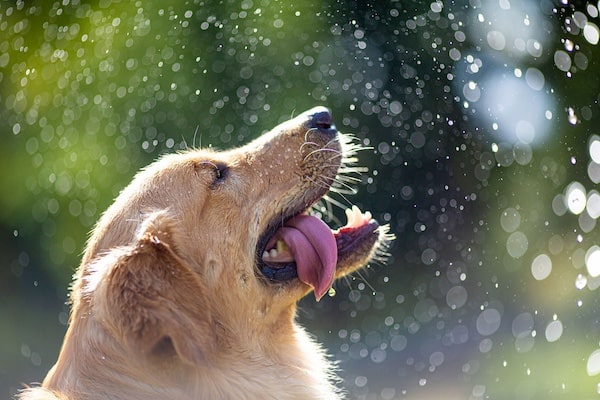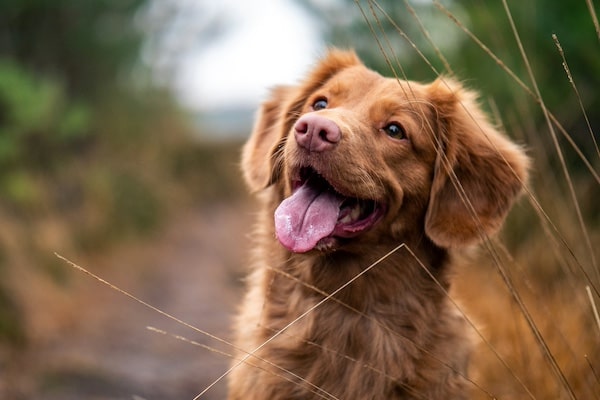The Labrador Retriever stands as one of the most beloved dog breeds worldwide, known for its friendly demeanor and unmatched loyalty. This guide delves into the key traits that define this breed, from its boundless energy to its acute intelligence.
Potential owners will gain insights into the Labrador’s needs for companionship, exercise, and mental stimulation. Understanding these characteristics is crucial for providing a nurturing environment. Moreover, practical tips will help you foster a strong bond with your Labrador, ensuring a joyful and harmonious relationship. This comprehensive overview aims to equip you with the knowledge to thrive together.
Labrador Retriever – Size & Life Expectancy
Height
22-24 inches (male)
21-23 inches (female)
Weight
65-80 pounds (male)
55-70 pounds (female)
Life Expectancy
11-13 years
About the Labrador Retriever
The Labrador Retriever, commonly known as the Labrador, has a storied past that traces back to the early 19th century in Newfoundland, Canada. Originally called the St. John’s Dog, after the capital city of Newfoundland, this breed was not initially known for its retrieving skills in the hunting field but rather for its adeptness at helping local fishermen. These dogs excelled in retrieving fish that escaped from hooks and towing in lines in icy waters. Their thick, water-resistant coats, powerful build, and otter-like tails, which served as powerful rudders, made them exceptionally suited for the frigid North Atlantic environment.
By the 1830s, English nobles visiting Canada recognized the dogs’ abilities and began importing them to England. Here, they were crossbred with other hunting breeds to refine their skills as retrievers of game. The name “Labrador” was given to differentiate this new breed from their Newfoundland cousins. Labs were trained to retrieve game in the hunting fields of England, a task they performed with remarkable discipline and energy.
The Labrador Retriever Today
Today, the Labrador Retriever holds the title as one of the most popular breeds in the United States, the United Kingdom, and beyond. Their affable nature and adaptability make them excellent family pets, service animals, and companions. Labs are particularly noted for their friendly and outgoing nature. They are incredibly social, both with people and other dogs, and their intelligence makes them highly trainable for various roles.
Labs have retained their utility in working roles such as search-and-rescue missions, and they are unparalleled as service dogs for the disabled. Their keen sense of smell and eagerness to please also make them ideal candidates for detection work and as therapy dogs, providing comfort to those in hospitals and schools.
Typical Owners and Popularity
The typical Labrador owner is as diverse as the breed’s many capabilities. Families often choose Labs for their gentle disposition and patience with children. Active singles and couples appreciate the breed’s energy and stamina — traits that make Labs perfect companions for outdoor activities. Moreover, their intelligence and trainable nature appeal to first-time pet owners who are looking for a manageable, yet deeply rewarding challenge.
Their widespread appeal has consistently placed them at the top of the most popular breeds list for several decades. This popularity stems not only from their versatility and range of abilities but also from their consistent, easy-going temperament.
Conclusion
In conclusion, the Labrador Retriever has evolved from a fisherman’s helper to a beloved household pet that fills myriad roles from a loyal family companion to a diligent worker. The breed’s friendly nature, combined with its eagerness to please, makes it a favorite among both novice and experienced dog owners. Understanding the Labrador’s rich history and the traits that have carried forward to today can help current and future owners appreciate and cater to the needs of these remarkable dogs. Whether in a family, a service role, or a companion for adventures, the Labrador continues to be a steadfast and versatile companion to all walks of life.
Traits & Characteristics of the Labrador Retriever
- Friendly and Sociable: Labradors are known for their friendly nature, making them excellent family pets and companions.
- Highly Intelligent: They are very smart, which makes them easy to train for various tasks and roles.
- Energetic and Playful: Labs have a lot of energy and enjoy being active, requiring regular exercise to stay healthy.
- Loyal and Trusting: They are known for their loyalty and have a deep trust in their human companions.
- Gentle and Patient: This breed is well-regarded for its gentle nature, especially around children.
- Strong Swimmers: Labs are natural swimmers, a trait that stems from their origins as fishing aides.
- Keen Sense of Smell: Their sharp olfactory abilities make them excellent at detection and tracking work.
Owning a Labrador Retriever
Considering bringing a Labrador Retriever into your home? This guide provides essential information across five key aspects of care, helping you ensure a happy, healthy life for your new companion.
Health
Labrador Retrievers generally enjoy good health, but they do have predispositions to certain conditions that prospective owners should be aware of. Common issues include hip and elbow dysplasia, heart disorders, and progressive retinal atrophy, which can lead to blindness. Obesity is another concern, as Labs are known to be fond of food and can easily become overweight if not monitored closely.
To keep a Labrador healthy, regular check-ups with a veterinarian are crucial. These should include routine screenings for the breed-specific issues mentioned. A proactive approach to their health with regular preventive care can lead to a longer and more vibrant life.
Exercise
Labradors are high-energy dogs that thrive on physical activity. Without sufficient exercise, they can become bored and potentially destructive at home. It is recommended that they get at least one to two hours of physical activity per day. This can include walking, running, swimming, or playing fetch.
Activities that engage their mind as well as their body are particularly beneficial. Puzzle toys, obedience training, and agility courses can help keep their minds sharp and bodies fit. Regular exercise not only maintains their physical health but also bolsters their mental well-being.
Grooming
The coat of a Labrador Retriever is short but dense, designed to repel water and provide insulation. While Labs are relatively low-maintenance in terms of grooming, they do shed. Regular brushing, about once or twice a week, can help manage shedding and keep the coat healthy. During shedding season in the spring and fall, more frequent brushing may be necessary.
Bathing should be done as needed, typically once every couple of months, unless the dog gets particularly dirty. Ears should be checked regularly to avoid buildup of wax and debris, which can lead to infections, especially in a water-loving breed like the Labrador.
Nutrition
Labradors are known for their hearty appetites, making proper diet and portion control crucial. High-quality commercial dog food that meets the nutritional levels established by the AAFCO is a good baseline. Foods rich in protein and low in fillers (like corn and wheat) help maintain their muscular build and energy levels.
It’s important to avoid foods that are toxic to dogs, such as chocolate, grapes, raisins, xylitol, and onions. Given their tendency towards obesity, keeping treats to a minimum and measuring out meals can prevent weight gain. Consultation with a vet can provide personalized guidance based on age, weight, and activity level.
Training
Labradors are among the most trainable breeds due to their intelligence and desire to please. They respond well to positive reinforcement techniques such as treats, praises, and play. Early puppy training and socialization are vital; they help ensure that the Labrador grows into a well-adjusted, sociable, and obedient adult.
Consistent training sessions are crucial for reinforcing good behavior and curbing undesirable habits. Socialization introduces the puppy to a variety of people, environments, and other animals, which is essential for developing confidence and a calm demeanor. Regular, ongoing training throughout a Labrador’s life helps maintain their social skills and adherence to family rules.
The Labrador Retriever Standard
The Labrador Retriever, distinguished by its robust and balanced physique, exemplifies both a working dog’s endurance and a companion dog’s gentle demeanor. When evaluating this breed according to the breed standard recognized by major kennel clubs, several physical and temperamental traits stand out as ideal.
Physical Characteristics
The ideal Labrador Retriever is strongly built, displaying a solid and athletic composition that supports its original role as a diligent retriever. A distinguishing feature is its broad head with expressive eyes that suggest a friendly and intelligent disposition. The eyes are medium-sized, clear, and typically either brown or hazel, set off by a distinctive “otter” tail, thick at the base and tapering towards the tip, which is a hallmark of the breed.
A Labrador’s coat is another key aspect of the breed standard. It should be short, dense, and without any waves, providing a weather-resistant quality that is crucial for a dog bred for outdoor activity. The breed standard recognizes three coat colors: black, yellow, and chocolate, each expected to be solid and uniform.
Size and Proportion
The breed standard specifies that male Labradors should stand about 22.5 to 24.5 inches at the withers, while females should be slightly smaller, ranging from 21.5 to 23.5 inches. The body is approximately as long from the withers to the base of the tail as the dog is tall at the withers, giving the Labrador a sturdy, compact look. An ideal weight is set in proportion to the height and overall balance of the dog.
Temperament
Behaviorally, the Labrador Retriever is celebrated for its docile and outgoing nature. The breed standard emphasizes a good-natured temperament without any sign of aggression or undue shyness. Labs are renowned for their intelligence, keen sense of smell, and eagerness to please, making them not only excellent family pets but also versatile working dogs capable of performing various tasks from hunting to search and rescue.
Movement
The movement of a Labrador is another critical aspect of the breed standard. The ideal Labrador moves with a smooth, efficient stride. The breed is known for its powerful rear drive and well-coordinated movement, free from any signs of awkwardness or stiffness. This efficient locomotion underscores the breed’s heritage as a capable working dog, able to sustain activity for extended periods.
Overall Impression
Ultimately, the breed standard for the Labrador Retriever calls for a well-rounded dog that combines agility, strength, and a friendly disposition. Judges at dog shows look for animals that not only adhere to these physical dimensions but also exhibit the characteristic good temperament that makes Labradors beloved as both working dogs and companions. The ideal Labrador is balanced, well-proportioned, and moves with a strong but effortless gait, truly reflecting the breed’s status as a versatile and enduring favorite.
Labrador Retriever – FAQ
Discover essential insights about the Labrador Retriever in this FAQ section. From their care needs to their temperament, find answers to the most common questions about one of the most beloved dog breeds, ensuring you’re well-prepared to welcome a Labrador into your life.
Alternatives to a Labrador Retriever
Several dog breeds share similar size, traits, and characteristics with the Labrador Retriever, making them equally beloved by families and enthusiasts alike.
The Golden Retriever is often the first that comes to mind when considering alternatives to the Labrador. Both breeds exhibit a friendly, intelligent, and eager-to-please nature, making them excellent choices for families, service roles, and therapy work. Golden Retrievers share the Lab’s love for activity and are also known for their beautiful, dense water-repellent coats, which require regular grooming.
Another breed similar in size and temperament to the Labrador is the Flat-Coated Retriever. Known for their cheerful and optimistic demeanor, Flat-Coated Retrievers are highly sociable and energetic, thriving in active households where they can participate in games and outdoor adventures. Their long, glossy coat distinguishes them from Labradors and requires a bit more grooming.
The Chesapeake Bay Retriever, while slightly more reserved than the Labrador, also shares many traits. This breed is renowned for its strength, protective instincts, and love of water. Chesapeake Bay Retrievers are excellent family pets and are particularly good for activities like hunting and retrieving, thanks to their hardy build and resilient nature.
Lastly, the Vizsla, though a bit leaner than the Labrador, is similar in its affectionate character and high energy levels. Vizslas are exceptionally trainable and make excellent companions for sports and outdoor activities due to their agility and endurance.
These breeds, like the Labrador Retriever, offer a blend of loyalty, intelligence, and versatility that makes them cherished members of many households. Each breed requires a commitment to training, regular exercise, and, most importantly, companionship, as they thrive on interaction with their human families.





